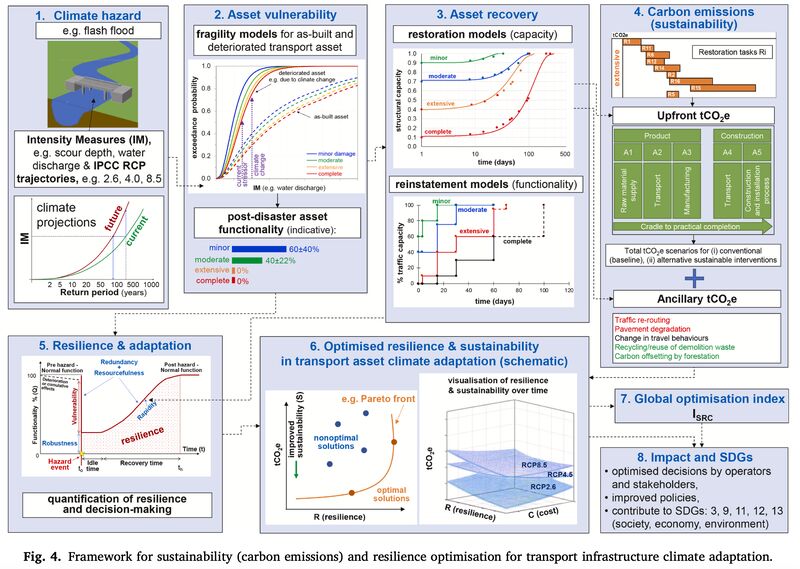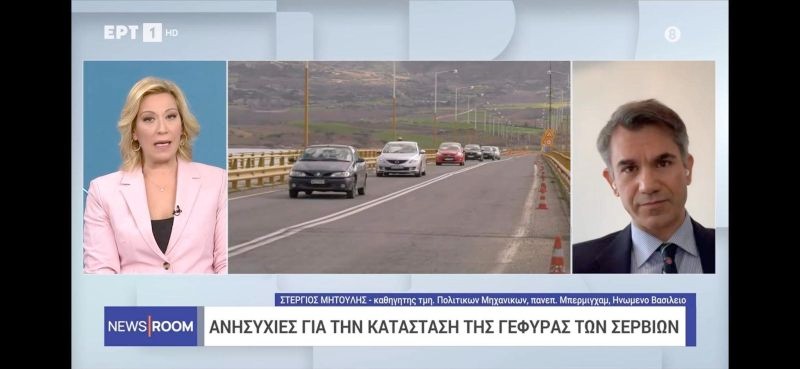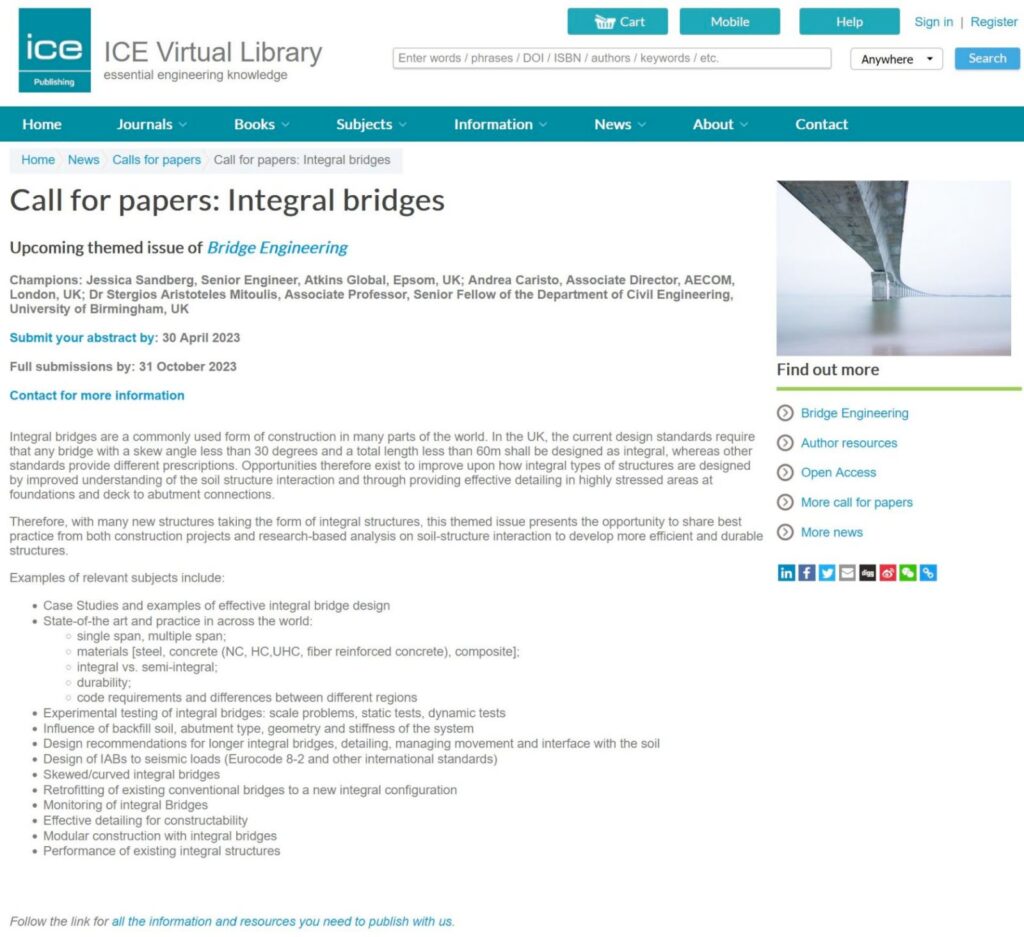Here you will find news relevant to the activities of the initiative including webinars, talks, consulting projects, publications, participation in conferences and meetings mostly relevant to resilience of critical infrastructure with emphasis on transport and energy assets and their intra/interdependencies, views on the UNs Sustainable Development Goals and use of digital and emerging technologies in infrastructure resilience- and sustainability-based management
28
Jul 23
New funded research project by HORIZON Europe
5 million EUR funding, 6 years, 17 partners
HORIZON-CL5-2023-D4-01-01: ZEBAI – Innovative methodologies to design Zero-Emission and cost-effective Buildings based on Artificial Intelligence.
Our research project Net-zero buildings leveraged by Artificial Intelligence (AI) has been funded by the European Union’s HORIZON-CL5-2023-D4-01-01. This research funding will be invested over the next 6 years to optimise building designs to make them net-zero and sustainable.
The Department of Civil Engineering, of the University of Birmingham, leads two major demonstrators of the project, i.e. the National Centre for Decarbonisation of Heat (NCDH) and the Energy Accelerator Building (EAB) to advance digital twinning of our campus. Our share is 700k EUR.
Partners
COO: Universidad Politécnica de Madrid, Spain
University of Birmingham, UK
Lurtis Rules SL, SP
University of Oxford, UK
Egis Group Ukraine
Lviv Polytechnic National University, Ukraine
Smart Sustainable Social Innovations Single Member P.C., Greece
Deerns, NL
Consejo Superior de Investigaciones Científicas, SP
Europäisches Institut für Innovation-Technologie, DE
Neo-Eco, FR
Agencia de Vivienda y Rehabilitación de Andalucía, SP
Technische Universiteit Delft, NL
FI-Group, BE
Amsterdam Institute for Advanced Metropolitan Solutions, NL
Morph Architecture Estudio, SP
Royal Institution of Chartered Surveyors, UK
15
Jun 23
a new paper that optimises resilience and sustainability
Our new paper published in Transportation Research Part D: Transport and Environment
Title: Sustainability and climate resilience metrics and trade-offs in transport infrastructure asset recovery
Authors: Dr Stergios Aristoteles Mitoulis, Dr Dan Bompa, Dr Sotirios Argyroudis, Open access: https://doi.org/10.1016/j.trd.2023.103800
In this paper we delve with critical aspects of sustainability, greenhouse gas emissions, climate resilience and costs, including an application for a bridge, where normalised metrics are integrated into one unique index, considering climate projections and sustainable solutions for recovery after floods.
The paper presents and applies a framework for quantifying the trade-offs between #sustainability and #resilience in the recovery of bridges after floods.

21
Mar 23
lightning presentation for GLOC2023
a 4-minute lightning presentation on “Climate adaptation for resilient critical infrastructure in low medium income countries facilitated by space technology” is available here:
This paper will be presented at GLOC-2023 Global Space Conference on climate change, 23-25 May, Oslo, Norway

15
Mar 23
interview by the Greek national TV ERT
Stergios Mitoulis of infrastructuResilience was interviewed by the Greek national TV ERT anchor Stavroula Christofilea about the Polyfytos Bridge. The bridge is the main pilot of our two recent research projects ReCharged and RISKADAPT funded by HORIZON EUROPE-total value 4.2m Euros. These two projects are examining more resilient, sustainable, and cost-effective interventions for this landmark bridge. In this framework, we are also applying a participatory decision-making approach to optimise the reconstruction of the second longest bridge of Greece in collaboration with the local authorities.
The interview video is available here

15
Mar 23
Themed issue on integral bridges-call for papers
Themed Issue: Integral Bridges
ICE Bridge Engineering of the Institution of Civil Engineers InstitutionofCivilEngineers
Champions:
Jessica Sandberg, Senior Engineer, Atkins Global, Epsom, UK;
Andrea Caristo, Associate Director, AECOM, London, UK
and Stergios Mitoulis, UK
Further information about the submission of journal papers is here: https://lnkd.in/eFfKCw75
Call for papers:
Abstract submission date: 30 April 2023
Full manuscript submission date: 31 October 2023
Weblink for abstract submissions: https://lnkd.in/e94tid4i

7
Mar 23
new project: ERIES- SCOUR&SHAKE
Title: Structural Performance monitoring and evaluation of scoured bridges under dynamic actions
Our ERIES (HORIZON-INFRA-2021-SERV-01-07) project is funded. The project will test for the first time in the international literature large scale specimens of bridge foundations under multihazard scenarios, as we have noticed that many bridges are scoured due to floods exacerbated by climate change and then they are subjected to earthquakes.
The project coordinated by Politecnico di Milanoinvolves several academic and industrial partners: University of StrathclydePolitecnico di Torino, Brunel University London, Università Politecnica delle Marche, University of Birmingham , Democritus University of Thrace – (D.U.Th.), Université Gustave Eiffel, Università di CamerinoEgnatia Odos S.A., SMARTEC SA, TAILOR ENGINEERING.
We will have access to the SoFSI shaking table at the University of Bristol to study vibration based approaches to monitor scoured bridges and to evaluate their performance under dynamic actions.

1
Mar 23
InfrastructuResilience supports Charity “Involve Nepal”
A new video is out explaining why we urgently need to reconstruct structures and facilities in earthquake-prone areas in Nepal and the need for fundraising for new small-scale buildings and facilities.
www.invovlenepal.org

16
Feb 23
ReCharged project kick-off meeting
Our Horizon-MSCA-2021-SE ReCharged project just started and members of the infrastructuResilience are the coordinators. The background is real- its Parthenon the most resilient building in the world!

ReCharged – Climate-aware Resilience for Sustainable Critical and interdependent Infrastructure Systems enhanced by emerging Digital Technologies
13
Jan 23
New paper on conflict-resilience for critical infrastructure peacebuilding
In our new article published in Sustainable Cities and Society we present a new framework for the resilience informed prioritisation of critical infrastructure recovery in wartorn countries. We discuss the challenges to existing resilience frameworks and the value of standoff and ground-validated data in peacebuilding. The framework is applied for the case of damaged bridges in west Kyiv in Ukraine, showing how resilience analytics and intelligence from crowdsourcing during a conflict can optimise decision-making and resources allocation.
The article “Conflict-resilience framework for critical infrastructure peacebuilding” is open access: https://lnkd.in/eqHmM7WW
Authors: Dr Stergios Aristoteles Mitoulis, Dr Sotirios Argyroudis, Dr Mathaios Panteli, Dr Clemente Fuggini, Dr Sotiris Valkaniotis, Dr William Hynes, Dr Igor Linkov

More info about our work for Ukraine can be found on our research initiative: www.bridgeUkraine.org -for a resilient and sustainable Ukraine
2
Dec 22
ICE podcast on structural resilience
Our podcast for the Institution of Civil Engineers ICE (UK) is now live! The podcast is part of the ICE KnowledgeHub and facilitates capacitybuilding and knowledgetransfer.
Title: Structural resilience and the role of the Civil Engineer
In this podcast, Dr Sotirios Argyroudis and Dr Stergios Mitoulis, joined hosts Mark Hansford, ICE director of engineering knowledge and Alexandra Wynne, ICE knowledge content director, to discuss the civil engineer’s role in ensuring structural resilience.
If you want to hear the podcast click this link
